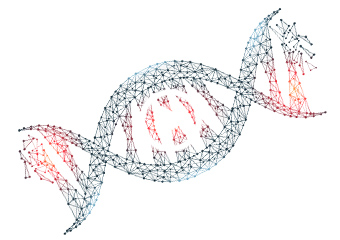Could trauma’s impact be passed along genetically from one generation to the next? For years, Rachel Yehuda, PhD has been studying the biological impact of trauma on Holocaust survivors and their children. We discussed some of her earlier findings here. At that time, researchers were in the early stages of investigating epigenetic change – the […]
The Surprising Connection between Posture and Resilience
When patients can’t find words to describe their experience, we can often find clues . . . . . . in their posture, in the ways they move, and even in the limitations to their movement. According to Pat Ogden, PhD, when a client has a greater range of movement options – or “movement vocabulary” […]
How a Mindfulness-Based Kindness Curriculum Could Shape the Future
Many of our adult clients struggle with the ability to control their thoughts and impulses. These weak self-regulation skills can damage relationships, decrease success at work, and lead to addictive behaviors. What if we could have intervened early on in their lives, even as early as grade school? What kind of changes would that have […]
A Simple Mindfulness Practice to Restore Vitality
When clients lose their sense of aliveness and vitality, how can we help them reclaim it? According to Dr. Tara Brach, we can begin by helping them notice the tension in their bodies. In the video below, Tara shares a personal story of how this helped her reclaim her own sense of aliveness. She also […]
How Drama and Theater Can Rewire Limiting Beliefs
As practitioners, we sometimes have to be creative in coming up with interventions that will work for a particular patient. And this can be especially true when clients have deeply rooted limiting beliefs about themselves after trauma. Bessel van der Kolk, MD is a master at coming up with creative approaches to help clients work […]
Guilt vs. Shame [Infographic]
What are the differences between guilt and shame? And how could it help our clients to have a better understanding of those differences? We thought it could be useful for you to have a side-by-side comparison of these powerful emotions that you could share with your clients. Because understanding these differences could help our clients […]
How to Help Clients Build Resilience after Trauma
How can we foster resilience in clients who have experienced trauma? A person’s response to trauma is often to lock away the parts that were wounded by their experience. But that can leave them feeling protective and fragile – and fearful about being triggered again. In the video below, Richard Schwartz, PhD shows how working […]
Two Simple Techniques That Can Help Trauma Patients Feel Safe
One of trauma’s most insidious effects is how radically and completely it can take away someone’s sense of safety. That’s why it’s crucial to create a safe space when working with patients who have experienced trauma. But that’s only part of the equation. According to Peter Levine, PhD, there’s a very important follow-up step – […]
A Quick and Simple Way to Think about the Brain [Infographic]
Could having a map of the brain help you in your work with clients? For example, just being able to show your clients what part of the brain controls emotion, or the nervous system, could open the door to helping them learn how to regulate these areas. So we created an infographic based on the […]









